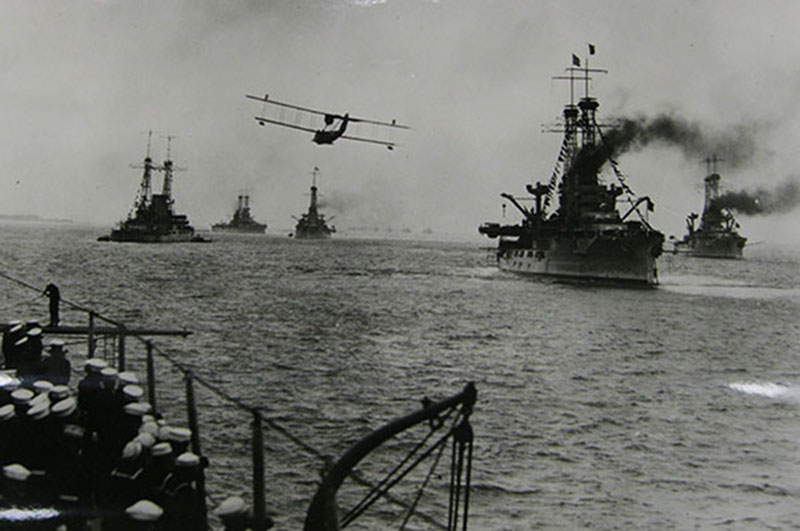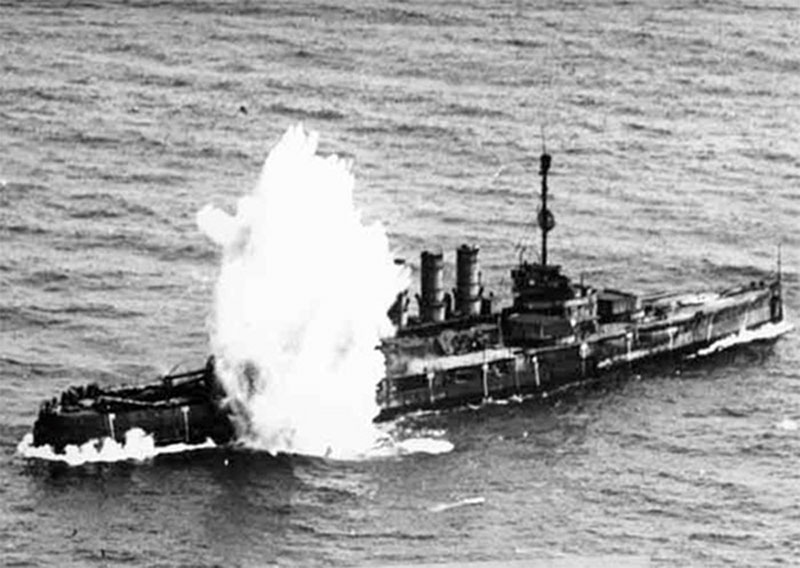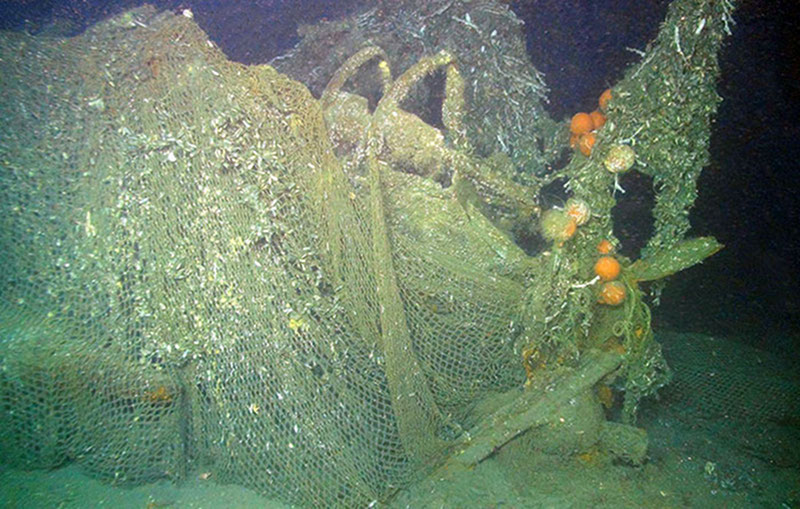
By Rod Mather, Co-Chief Scientist - University of Rhode Island
May 27, 2013

U.S. Navy ships prepare to watch the Billy Mitchell bombing experiments. Image courtesy of National Archives, Washington, DC. Download larger version (jpg, 621 KB).
At the all-hands meeting yesterday on board the NOAA Ship Ronald H. Brown, there was barely enough room for everyone to squeeze into the ship’s large main science lab. The Deepwater Canyons 2013 project is as populous as it is cutting-edge. It includes multiple disciplines and science objectives addressed on two separate, but interconnected, cruise legs.
Scientists from multiple universities have joined forces with colleagues from the Bureau of Ocean Energy Management (BOEM), NOAA, the U.S. Geological Survey (USGS), Continental Shelf Associates, Woods Hole Oceanographic Institute, and the North Carolina Museum of Natural Sciences to better understand a spectacular series of canyons along the mid-Atlantic bight.
Video of ROV dive - Billy Mitchell Fleet. Video courtesy of Deepwater Canyons 2013 - Pathways to the Abyss, NOAA-OER/BOEM/USGS. Download (mp4, 4.8 MB).
Leg II started more than a week ago with a transfer of personnel at sea off the coast of Virginia. It ended today, with the Ron Brown docked in North Charleston and the highly dedicated, skilled, and sleep-deprived science party and remotely operated vehicle (ROV) crew unloading their equipment, data, and samples.
During the intervening days, we focused on both archaeological and biological studies related to shipwrecks and other archaeological sites in and around the mid-Atlantic deepwater canyons. We generated extensive photograph and video records and collected samples, cores, and bathymetric data. We worked in water as shallow as 100 meters and as deep as 2,600 meters.

SMS Ostfriesland under attack. Image courtesy of Image courtesy of National Archives, Washington, DC. Download image (jpg, 85 KB).
This cruise completed the first archaeological investigations of the so-called “Billy Mitchell Fleet” - eight German warships from World War I. These historically significant vessels were part of the German Navy taken by the United States after the war.
Brought over to America after the war, the ships were subsequently studied in naval yards such as New York and Philadelphia, and eventually sunk during a series of military experiments in 1921 designed to test the effectiveness of air power at sea. American Army General Billy Mitchell orchestrated these experiments, which challenged the United States Navy’s dominant paradigms and ultimately helped form the United States Air Force. The sunken majestic remains of the Billy Mitchell Fleet symbolize a fundamental turning point in U.S. military history.
In summer 1921, the air space 50 to 60 miles off the coast of Virginia was filled with the Martin Bombers of Billy Mitchell’s U.S. Army Air Service. Offshore, the German battleship Ostfriesland, veteran of the battle of Jutland, awaited their attack. Seven other “targets” – the light battle cruiser Frankfurt, three destroyers, and three submarines – also lay at anchor waiting for the bombs. Close by, the Navy transport Henderson, hosted members of Congress, the cabinet, generals, admirals, foreign military attaches and a cross section of the world’s media.
They had all come to witness and wonder whether bombs dropped from the air could sink a battleship, the most powerful and expensive military machine of the day. The stakes could not have been higher. The outcome would determine the trajectory of military history and the prospects for the independent U.S. Air Force that Mitchell desired.
It would also shape the U.S. Navy’s future. Drawn into a war of words with Mitchell, Secretary of the Navy, Josephus Daniels, had faith in the future of battleships and offered to stand bare headed on the bridge of any warship Mitchell chose to attack. Mitchell sunk the Ostfriesland (as well as the lesser craft subjected to his attacks), Daniels ate his words, and air power came of age.

One of the German destroyers damaged by fishing gear. Image courtesy of Deepwater Canyons 2013 - Pathways to the Abyss, NOAA-OER/BOEM/USGS. Download larger version (jpg, 1.8 MB).
This week, we documented and explored the Ostfriesland, Frankfurt, and others. Although mostly stripped before the sinking of recoverable artifacts, the machinery, technology, and gunnery of the early 20th century German Imperial Navy (Kaiserliche Marine) is truly fascinating. Equally intriguing are the biological communities of anemones, urchins, crabs, and thousands of catsharks that now call these shipwrecks home. There is little doubt that these shipwrecks are worthy of preservation and study.
The damage inflicted on them by Mitchell’s bombs and the initial sinking, however, is nothing compared to the modern-day damage caused by trawling and anchoring. Huge nets and gear cover some of the smaller vessels and freshly damaged iron hull plating revels new patches of corrosion. The financial losses and dangers to the fishermen are only matched by the loss to history and archaeology from their gear.
One of our tasks now is to help BOEM and NOAA preserve and protect these historic sites—sites that represent a charismatic and some would say visionary U.S. General, the formation of the U.S. Air Force, and a critical point in military history.